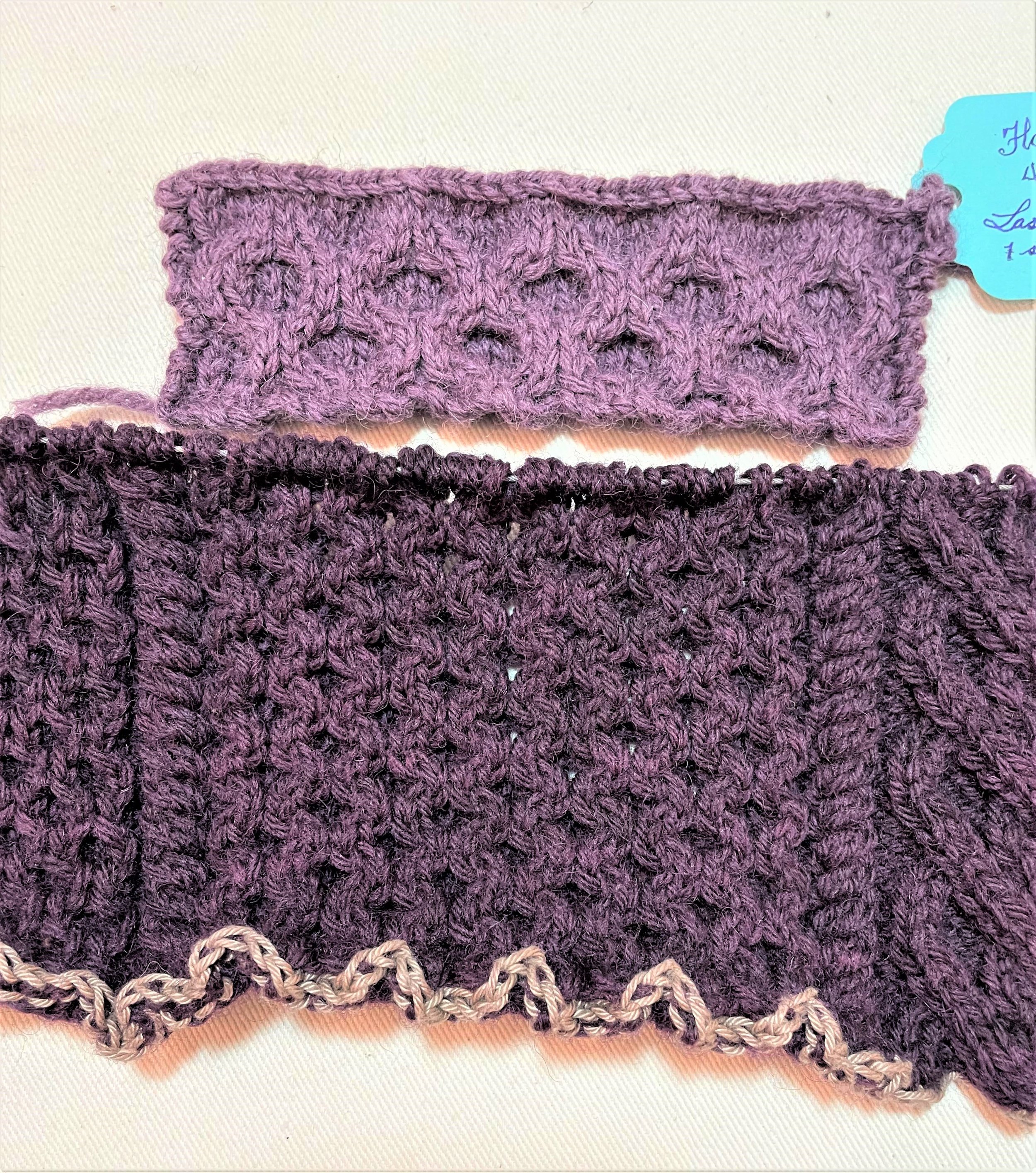Post-Op Recovery and a Happy Surprise
You may have (correctly) concluded that I am bananas based on my last post, so I thought I’d share a bit more about my sweater’s surgical intervention. Here is my sweater back, with the right honeycomb panel reknit. It’s really not as scary as it looks to do this.
I put the rest of the (not-jacked-up) knitting on waste yarn holders first, so I wouldn’t have any other knitting needles in my way during surgery. Then I used a pair of short DPNs (5” glove needles, if you’re playing along at home) and a cable needle to reknit the frogged panel. Starting from the bottom, I carefully selected each frogged strand, one row at a time, working them all from the RS. Fun fact: Although counterintuitive, it turned out that reknitting with a size larger than my desired size for the rest of the piece worked much better for keeping the reknit stitches even during surgery. Who knew? Keep that idea in your pocket in case (Knitting Gods Forbid) this ever happens to you. Once I reworked all the rows properly, I put the reknit panel on waste yarn as well before moving on to the other side.
Drunk with power Emboldened by success, I gutted the opposing side. Note: I only frogged back to the first cable cross row, rather than all the way down through the cast on. Because I don’t hate myself that much.
Once the patient was resting comfortably post-op, I turned my attention to facing my real fear.
That, dear friends, is my terror of mismatched dye lots. Because I had to dye my yarn on the stovetop it ended up that there were four different batches, using my biggest cauldron. My general level of dye lot anxiety went to eleven over this. I was as meticulous as I know how to be with regard to water, yarn amounts, time and temperature. I took copious notes, and I even used math. But I’m well aware that as a dyer, I make an excellent knitter. I’m a rank amateur as a dyer, and happy to keep it that way.
Even though it looked to be all the same color when it dried, I was still afraid there would be lines of demarcation in the work from skein to skein. And yes, I know I can alternate skeins, but I stupidly fearlessly threw caution to the winds when I began by choosing to use only one skein. Failure to match at this point would mean a total re-start. And probably permanent psychic damage.
The Knitting Gods threw me a bone! In the brightest light available, I wound up the next skein and bravely spit spliced it in. I’m profoundly delighted to report that the new skein is a dead match to the first one. All hail the repeatable dye process! And getting lucky.
All (“All”) that remains is to carry on working up the remaining 3,520 yards. And to not run out of yarn. And to get a sweater that fits. And to live long enough to find out. Anybody placing bets?











